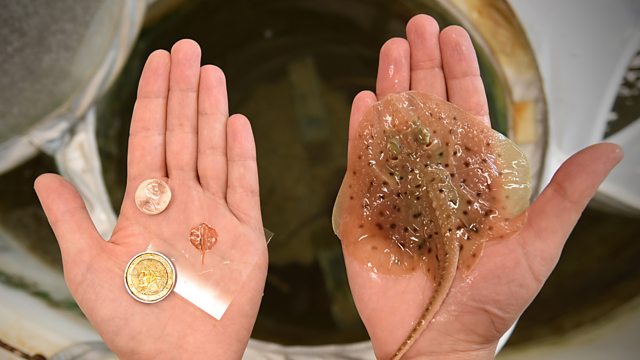Main content
From Rat to Stingray to Human Heart
Professor Kevin ‘Kit’ Parker explains the design of a miniature robotic stingray. Along with a gold skeleton and a gel-like biomaterial, it contains a single layer of hearts cells from a rat. These cardiac cells were engineered to be responsive to light. Using specific wavelengths as a guidance system, the robot is able to negotiate a small obstacle course. The motion of the stingray would help us understand how the human heart pumps blood and the resulting diseases.
Photo: Tissue-engineered soft-robotic ray and a little skate, Leucoraja erinacea/Karaghen Hudson
Duration:
This clip is from
More clips from Science In Action
-
![]()
Libanoculex Intermedius—Can carbon capture live up to its hype?
Duration: 00:52
-
![]()
How 'viral sex' in bats can create new hybrid Sars viruses
Duration: 06:05
-
![]()
HIV: The dangers of hidden viruses - and how to find them
Duration: 05:23






